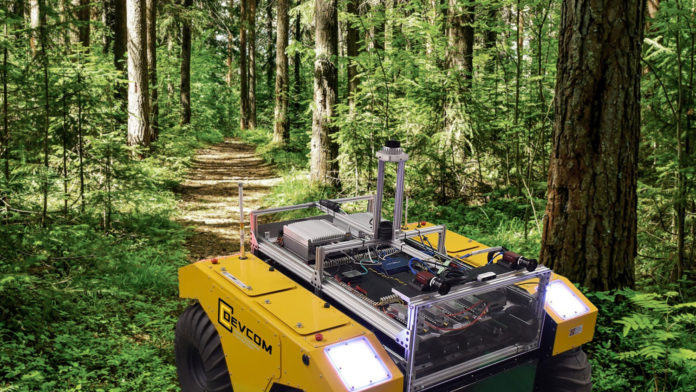Researchers from the U.S. Army have developed a technique that allows robots to remain resilient when faced with intermittent communication losses on the battlefield. The new technique is called α-shape.
Multiple robots may want to visit the same area during missions, including unmanned search and rescue, robotic reconnaissance, perimeter surveillance, and robotic detection of physical phenomena, such as radiation and underwater concentration of lifeforms. Army’s resilience technique provides an efficient method for resolving goal conflicts between multiple robots, despite not being able to consult with one another.
The α-shape technique was developed by researchers from the U.S. Army Combat Capabilities Development Command, known as DEVCOM, Army Research Laboratory, and the University of Nebraska, Omaha Computer Science Department.
“Robots working in teams need a method to ensure that they do not duplicate effort,” said Army researcher Dr. Bradley Woosley. “When all robots can communicate, there are many techniques that can be used; however, in environments where the robots cannot communicate widely due to needing to stay covert, clutter leading to radios not working for long-distance communications, or to preserve battery or bandwidth for more important messages, the robots will need a method to coordinate with as few communications as possible.“
The technique involves arranging all the regions that have been explored by robots, followed by an intelligent search algorithm that incrementally combines and shares the α-shape information between robots along their communication tree and rapidly checks for conflicts of a robot’s selected location. The algorithm is also used to store conflicts even if the robot that selects the goal disconnects from the communication tree before reaching the goal.
The research team has reported experimental results on simulated robots within multiple environments and physical Clearpath Jackal Robots.
“To our knowledge, this work is one of the first attempts to integrate geometry-based prediction of potential conflict regions to improve multi-robot information collection under communication constraints, while gracefully handling intermittent connectivity loss between robots,” Woosley said.
This research will pave the way for other communications limited cooperation methods that will be helpful when robots are deployed in a mission that requires covert communications.
